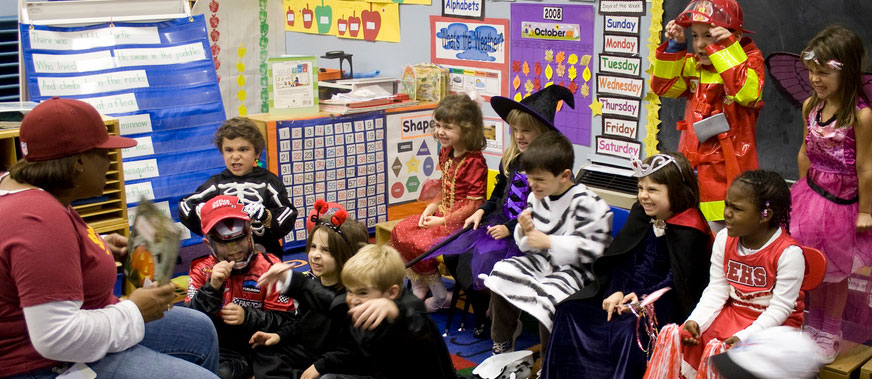Learn English » English Listening Lessons for Kindergarten

English Listening Lessons for Kindergarten
1. Simon says
This is a simple activity that focuses on listening to commands.
Procedure
Give the students a series of simple commands to perform.
Examples
Stand up!
Open your books!
Put your hands on your head!
Then the students are told that only those commands prefixed by the words ‘Simon says’ are to be carried out: anyone who makes a mistake and obeys other commands loses a ‘life’. After three or four minutes, how many students have still lost no lives? Or only one life?
Variation
Students can also be given chances to be the ones to give commands.
2. Jazz chants
This is a very interesting activity that focuses on listening, but also involves singing.
Procedure
Recite the chant below multiple times, with slightly emphasized but natural speech rhythms. After one reading, ask the class to repeat, in chorus, the refrain, ‘what did you say?’
When you feel the students are confident and are enjoying it, divide them into two groups. One group will sing the verses, and the other group will sing the refrain.
The chant
I said, Sh! Sh! Baby’s sleeping!
I said, Sh! Sh! Baby’s sleeping!
What did you say?
What did you say?
I said, Hush! Hush! Baby’s sleeping!
I said, Hush! Hush! Baby’s sleeping!
What did you say?
What did you say?
I said, Please be quiet, Baby’s sleeping!
I said, Please be quiet, Baby’s sleeping!
What did you say?
What did you say?
I said, Shut up! Shut up! Baby’s sleeping!
I said, Shut up! Shut up! Baby’s sleeping!
WAAAAAAAA!!!
Not anymore.
Variation
Once the students are familiar with the idea of a jazz chant, ask them to try making up their own.
3. Hearing mistakes
This is a very good listening activity for advanced kindergarten learners.
Procedure
It is assumed that before doing this activity, the students would be familiar with a couple of famous stories such as fairy tales.
In this activity the teacher tells a story that is very familiar to the class, introducing deliberate mistakes in it. Students are asked to raise their hands when they hear a mistake. Once students raise their hands, they have to call out the correction.
In classes with advanced English proficiency, the teacher can make deliberate mistakes even in dialogues. However, with lower proficiency classes, it is safer to stick to the story line itself.
4. Walking warmers
This activity involves listening and some acting.
Procedure
You need a space free from chairs and tables. Use a selection of activities, each lasting about 10 to 15 seconds, to build up a five-minute period. Below given are some examples of activities.
Tell the students to act
- as though it is very cold
- as though they are exhausted
- as though they are crossing a stream on stepping stones
- as though they are walking on a tightrope
- as if they are meeting each other for the first time.
Note:
These activities are potential ‘warmers’ for new classes and for classes in which the students know each other. The physical movement and the inventiveness can provide a welcome change from more sedentary work.
Was this article useful? What should we do to improve your experience? Share your valued feedback and suggestions!
Help us to serve you better. Donate Now!

